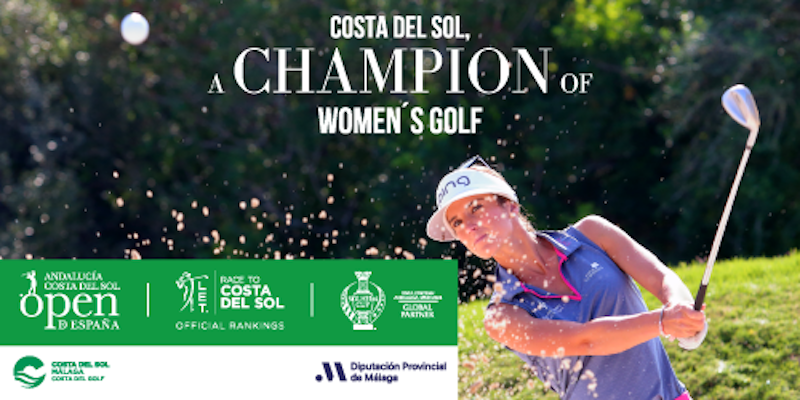
 The irrigation of golf courses, due to the large amount of water they require, has been criticized for some time by certain sectors of society, especially some environmental associations. The truth is that the current computerized irrigation systems and the quality of the water conduction networks have nothing to do with the old-fashioned pipes and irrigation methods of yesteryear. Every drop of water is used to the maximum, and even more so in these times of crisis, when every last penny is under scrutiny.
The irrigation of golf courses, due to the large amount of water they require, has been criticized for some time by certain sectors of society, especially some environmental associations. The truth is that the current computerized irrigation systems and the quality of the water conduction networks have nothing to do with the old-fashioned pipes and irrigation methods of yesteryear. Every drop of water is used to the maximum, and even more so in these times of crisis, when every last penny is under scrutiny.
Professors from different universities, agricultural experts and authorities from different areas have been demonstrating that the existence of golf courses is positive for the environment where they are located, due to the preservation and care of the flora and fauna, and that the benefit that, in terms of employment, the use of water generates is greater in golf than in agriculture.
The public company Acosol, which depends on the Mancomunidad de Municipios de la Costa del Sol Occidental, is an example of good management in the regeneration of drinking water and its supply to golf courses. Not in vain, it currently supplies recycled water to 35 courses. In two years’ time, and perhaps sooner, all the golf courses on the Costa del Sol could be irrigated, according to Acosol’s CEO, Juan Carlos Fernández-Rañada de la Gándara. “As long as”, he adds, “the administrations comply, because the works that depend on the Junta de Andalucía are going badly”, and he mentions two wastewater treatment plants: “La Víbora is going very slowly and Guadalmansa three quarters of the same, the extension is practically at a standstill, supposedly due to lack of funds”.
The head of Acosol points out that it is about to tender the works of La Víbora, which will double the production capacity of recycled water in that treatment plant, whose supply could reach all the golf courses in the eastern part of the municipality of Marbella. The works will take at most two years. The pipeline from Fuengirola to Mi- jas is already being executed and will be finished in one year, “provided that the commitments of the works are kept, which at the moment are not being fulfilled in Guadalmansa”, remarked Fernández-Rañada. “When these works are finished, we will be able to irrigate all the golf courses on the Costa del Sol with reclaimed water,” he assures. -What volume of reclaimed water does Acosol produce? In 2010 we produced and supplied 3,700,000 cubic meters, and in 2011, with the last quarter to go, we have already exceeded that figure. If we compute this quarter as we did last year, we would be at an annual growth of almost ten percent. Almost all of that water is for golf, as only two or three different facilities are irrigated. With the La Víbora pipeline we can irrigate all the public green areas of Marbella, at least from the town center to Cabopino.
-If this recycled water were not used for golf, what would it be used for?
-It would be thrown directly into the sea. We can produce enough recycled water to irrigate not only all the golf courses on the Costa del Sol, but also all the public green areas. It would obviously be a problem of distribution, of getting the water to each green area, which would require investments. We could have a water recycling capacity equivalent to half of the La Concepción reservoir (the one that supplies water to Marbella and several municipalities on the Costa del Sol, reaching Torremolinos), which has a capacity of 20 cubic hectometres.
-What is the quality of the water reclaimed by Acosol?
-If we didn’t know where it came from, we could even drink it. It is literally drinking water.
-What income does the water supplied to the golf courses generate?
-In this we have our pluses and minuses with the fields because a tariff is being applied that is not adjusted to the production costs, probably for political reasons from some time ago. Once we see the real costs of the new production that we have now, when this is put in place, I think we will have to make a price update. We do not intend to make money with the tariff, but at least we will have to cover the production costs, which are not covered today.
-Some fields complain about the price of water, perhaps because they have their own wells?
-Colloquially speaking, some people cheat themselves a lot in solitary confinement. The price of our water is very low, much cheaper than domestic water. The price of recycled water is 15 cents per cubic meter, while domestic water can cost up to one euro.
-What is thecost of irrigation with reclaimed water for a golf course?
-We have been supplying an average of between 300,000 and 400,000 cubic meters per year and field -depending on the use-, which, multiplied by 0.15, gives us an idea of the cost (between 45,000 and 60,000 euros). To irrigate a field with recycled water requires between 2,500 and 3,000 cubic meters per day, but it is not irrigated all year round because there are three months on average when it is not necessary (rainy season). When someone buys something, it always seems expensive, but it is not really a big item in the accounts of a golf course. And you have to take into account that the environmental benefits are immense for the whole society, because it is not reasonable to irrigate with drinking water when there is the possibility of doing it with recycled water.
-Golf has its detractors due to its high water consumption…
-It has many, and I think unjustifiably so. To achieve a massive production of recycled water like this requires an important technological development and very heavy investments in the treatment plants, something that is done in very few places. To be able to reuse water that would otherwise be lost and that, in addition, by reusing it we avoid the consumption of drinking water, which means not overexploiting the aquifers, has positive environmental effects from all points of view. There is nothing more environmentally friendly than using recycled water. It is necessary to defuse the erroneous idea that golf courses are counterproductive for the environment, when it is precisely the opposite. In the development of the General Plan of Marbella, when the golf courses of the municipality were reviewed, at the end a real plea was made saying that it was the most ecological thing that had been done in Marbella, for the reproduction of plant species that were lost and for transforming authentic drylands in gardens with a wealth of flora and fauna magnificent.















Leave a Reply